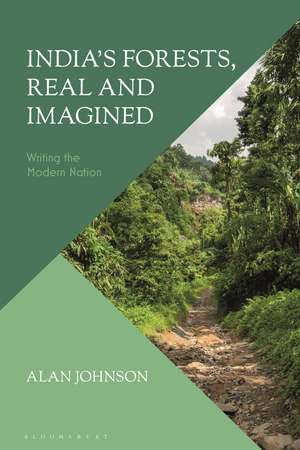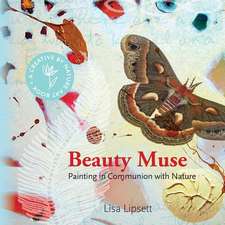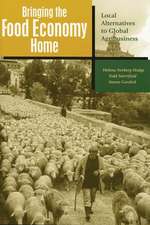India's Forests, Real and Imagined: Writing the Modern Nation
Autor Alan Johnsonen Limba Engleză Hardback – 25 ian 2023
| Toate formatele și edițiile | Preț | Express |
|---|---|---|
| Paperback (1) | 192.48 lei 43-57 zile | |
| Bloomsbury Publishing – 24 iul 2024 | 192.48 lei 43-57 zile | |
| Hardback (1) | 540.80 lei 43-57 zile | |
| Bloomsbury Publishing – 25 ian 2023 | 540.80 lei 43-57 zile |
Preț: 540.80 lei
Preț vechi: 774.29 lei
-30% Nou
Puncte Express: 811
Preț estimativ în valută:
103.51€ • 112.48$ • 87.01£
103.51€ • 112.48$ • 87.01£
Carte tipărită la comandă
Livrare economică 21 aprilie-05 mai
Preluare comenzi: 021 569.72.76
Specificații
ISBN-13: 9780755634101
ISBN-10: 0755634101
Pagini: 280
Ilustrații: 10 bw illus
Dimensiuni: 156 x 234 mm
Greutate: 0.57 kg
Editura: Bloomsbury Publishing
Colecția Bloomsbury Academic
Locul publicării:London, United Kingdom
ISBN-10: 0755634101
Pagini: 280
Ilustrații: 10 bw illus
Dimensiuni: 156 x 234 mm
Greutate: 0.57 kg
Editura: Bloomsbury Publishing
Colecția Bloomsbury Academic
Locul publicării:London, United Kingdom
Caracteristici
Explores the history of the Indian novel from Chattopadhyay's Anandamanth to contemporary writers such as Amitav Ghosh, Arundhati Roy and Jhumpa Lahiri
Notă biografică
Alan Johnson is Professor of English at Idaho State University, USA. He is the author of Out of Bounds: Anglo-Indian Literature and the Geography of Displacement (2011) and articles on topics ranging from environmental literature in India to Hindi film.
Cuprins
Preface: The Plan of the Book The Argument and Its Scope A Note on Translation1. Introduction: Epic Forests, Sacred Groves and Vernacular Jungles: Forests in Context2. Colonial Modernity, National Romance, and the Global Trade in Wood3. Forest, Village, Nation4. Home Forest, Outlaw Forest: Indigeneity, Forestry, and National Hegemony5. The Forest and the City: Aspiration, Cosmopolitanism, and PollutionConclusion: Language Politics, Religious Ideologies, and the Fate of ForestsBibliographyIndex
Recenzii
We are currently witnessing a renaissance of arboreal literary criticism and cultural studies throughout the world. Alan Johnson's India's Forests, Real and Imagined: Writing the Modern Nation richly explores the meaning of trees and forests in Indian literary works from the past century and a half, revealing the many dimensions of "arboreal India" but focusing chiefly on the use of forest imagery in critiquing colonialism and conceptualizing Indian nationalism. This is a clear, accessible, and authoritative introduction to Indian literature and to the significance of forests in many of India's diverse subcultures.
Indian forests are sites of ambivalence signifying both purity, contemplation as well as doubleness and conflict. How does one understand the arankayas, the forest texts of India, both classical and contemporary, in the context of Global South Anthropocene conditions - the destruction of forestlands, displacement of indigenes and loss of livelihoods? How do these forests, both real and imagined become key sites for articulating national and regional identities? How do Indian writers counter Western colonial tropes by drawing on their own rich corpus of forest narratives? India's Forests Real and Imagined considers these questions by skilfully knitting together a wide variety of texts from the Sanskrit epics to contemporary literary narratives that are connected by the trope of the forest. The book teases out the invisible connections that the arboreal forges between urban spaces and wilderness, the ascetic and erotic. Most importantly, this book reimagines received histories by employing darshana -the traditional Indian term for the dialogic mode of devoted seeing- as a multi-layered sight tool that opens up multiple free narrative spaces in which no single version is made to bear the burden of representation.Lucidly articulated and argued, this book is the first of its kind to undertake a full length study of forest narratives from India and has important implications for ecocritical scholarship.
Indian forests are sites of ambivalence signifying both purity, contemplation as well as doubleness and conflict. How does one understand the arankayas, the forest texts of India, both classical and contemporary, in the context of Global South Anthropocene conditions - the destruction of forestlands, displacement of indigenes and loss of livelihoods? How do these forests, both real and imagined become key sites for articulating national and regional identities? How do Indian writers counter Western colonial tropes by drawing on their own rich corpus of forest narratives? India's Forests Real and Imagined considers these questions by skilfully knitting together a wide variety of texts from the Sanskrit epics to contemporary literary narratives that are connected by the trope of the forest. The book teases out the invisible connections that the arboreal forges between urban spaces and wilderness, the ascetic and erotic. Most importantly, this book reimagines received histories by employing darshana -the traditional Indian term for the dialogic mode of devoted seeing- as a multi-layered sight tool that opens up multiple free narrative spaces in which no single version is made to bear the burden of representation.Lucidly articulated and argued, this book is the first of its kind to undertake a full length study of forest narratives from India and has important implications for ecocritical scholarship.


















